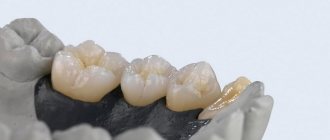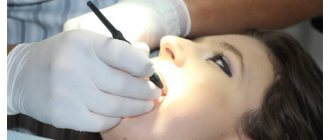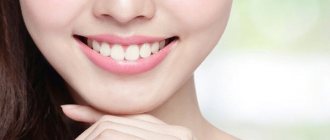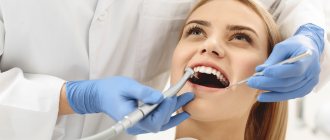Double beauty
Pregnancy is a wonderful time in a woman’s life. But often expectant mothers, as well as young mothers breastfeeding, are upset by the presence of many restrictions in all areas of life - from nutrition to sports and recreation. In particular, there are many prohibitions in the matter of self-care. But you really want to be beautiful during this magical period of your life, and modern women are usually not ready to just give up going to a cosmetologist and using a variety of cosmetics for several years.
Fortunately, it is not at all necessary to wrap yourself in a burqa for this entire period and use exclusively baby cream and a cucumber mask. Let's, together with the cosmetologist of the EuroMed Clinic, Svetlana Mikhailovna Lexandrova, figure out what is actually prohibited during this period and what is not.
Effect of pregnancy on kidney function
Renal blood flow increases and glomerular filtration increases (maximum in mid-pregnancy) - associated with the excretion of metabolic products of the woman and the fetus.
The permeability of the kidneys to protein and carbohydrates increases: proteinuria (protein in the urine), glucosuria. The excretion of 140 mg/day of glucose in the urine is considered the upper limit of the physiological norm. Peak glucose secretion was detected at 9 months of pregnancy.
The peristaltic function of the ureters is sharply suppressed, as a result of which they expand and urine is retained in them. Atony of the ureters leads to impaired drainage of urine from the pelvis, which creates favorable conditions for the development of pyelonephritis in pregnant women. In the postpartum period, these phenomena soon disappear.
Hair care
There is an unusually persistent myth that pregnant women should not cut or dye their hair.
Where it came from is now difficult to understand, but nevertheless, in the antenatal clinic you will definitely meet several expectant mothers with noticeably grown hair roots and a haircut that has lost all shape. There is no scientific evidence that cutting or dyeing hair with modern gentle hair dyes can harm a pregnant woman or unborn child. Therefore, forget about grandma’s fears and feel free to go to the beauty salon! The only caveat is that don’t forget that after the birth of your baby, you most likely won’t have time for a hairdresser in the first months, so closer to the birth, get a haircut that will be easy to care for when you’re short on time.
Antibacterial therapy
If the disease is advanced and cannot be treated sparingly with the use of bactericidal ointments and solutions, then the doctor decides to use antibacterial drugs. The treatment regimen is determined individually, taking into account the duration of pregnancy, the stage of progression of bartholinitis, the presence of associated complications, and the type of pathogen that provoked the inflammation.
To destroy a bacterial infection, the following drugs are often prescribed:
- "Amoxiclav";
- "Augumentin".
The course of therapy and dosage are individual. Also safe for the fetus are drugs belonging to the group of cephalosporins:
- "Ceftriaxone" in the form of injections;
- "Cefexin" for oral administration.
If inflammation of the Bartholin glands occurs with complications, the pregnant woman is prescribed the antibiotic Sumamed. The course of therapy is carried out under the strict supervision of a specialist. The doctor monitors the condition of the unborn child, as well as the effectiveness of the drug used, and adjusts the regimen if necessary.
Manicure and pedicure
Can! You can do a manicure, you can do a pedicure, you can paint your nails and remove polish - all this will not affect your baby’s health in any way. The only thing is to be doubly attentive to the sterility of the instruments that the master uses - because now you are responsible not only for yourself, but also for the health of the unborn child. Although, to be honest, it’s unlikely that you, even if you weren’t pregnant, would agree to catch any unpleasant infection because of unsterile instruments.
By the way, keep in mind that almost all maternity hospitals require that the woman in labor not have nail polish. This often surprises women, but in fact such a wish makes sense. During childbirth, a variety of unforeseen situations are possible, and one of the symptoms signaling a problem is the condition of the nails. If your nails begin to turn blue, this indicates problems with the cardiovascular and respiratory systems. Perhaps you shouldn’t risk your health for bright marigolds in such a situation.
Is lip augmentation right for you?
To answer this question, you must first ask yourself why you want to change your lips. You should not undergo this procedure unless you really want to change your appearance.
If you're considering lip augmentation to make someone happy or to try to create the perfect look, think twice.
It is also important to have realistic expectations about the outcome. Extended lips can make your lips look plump and full, but you'll still be yourself when you step out of the doctor's office.
Before undergoing lip augmentation surgery, you must be healthy and not smoke. You may not be a candidate for lip augmentation if you have:
- active infection, such as oral herpes;
- diabetes;
- lupus;
- problems with blood clotting.
Cosmetics
It is forbidden
Products with retinoids are strictly prohibited during pregnancy, breastfeeding and three months before a planned pregnancy - they can have a teratogenic and embryotoxic effect, that is, negatively affect the fetus and increase the risk of congenital malformations. Therefore, products with retinoids are prescribed only if there is a negative pregnancy test and reliable contraception.
It is undesirable to use drugs containing acids during pregnancy. These are quite aggressive agents, and during pregnancy they can cause an unpredictable reaction: irritation, pigmentation disorders (lightening of some areas or, conversely, the appearance of dark spots), etc.
You should not use creams containing hormones (usually these are cosmetics that fight the signs of aging), because the body already undergoes powerful hormonal changes during pregnancy and lactation; you should not additionally load it.
Need to!
Be sure to use sunscreen during pregnancy. This is due to the fact that hormonal changes in the body often provoke the development of hyperpigmentation. And the sun's rays make this problem worse.
Remedies against stretch marks. Striae or stretch marks are such an unpleasant phenomenon that it is much easier to prevent than to get rid of it later. Be sure to use good anti-stretch mark creams from the very beginning of pregnancy, applying them with massaging movements to problem areas: chest, shoulders, abdomen, hips, buttocks. By the way, stretch marks often appear after childbirth, during lactation - after all, a nursing woman’s breasts can increase by several sizes compared to their normal state. Therefore, do not forget about the prevention of stretch marks throughout the entire period of breastfeeding.
Side effects and risks
The side effects of hyaluronic acid fillers are temporary and should only last a few days. These may include:
- bleeding from injection sites;
- swelling and bruising;
- redness and soreness at the injection site;
- reactivation of cold sores or blisters (herpes simplex) on or around the lips.
More serious side effects or risks may include:
- severe and prolonged swelling or bruising lasting one week to 10 days;
- lip asymmetry (parts of the lips of different sizes);
- lumps and unevenness on the lips;
- infection;
- injection into a blood vessel causing tissue loss
- ulceration, scarring, or hardening of the lip;
- an allergic reaction that causes redness, swelling, or itching around the lips.
If you develop a fever or severe swelling, you should call your doctor immediately.
Salon treatments
Many people forget the way to a cosmetologist as soon as they see two lines on the test. This is a completely unnecessary sacrifice! Yes, there are certain procedures that are not recommended during pregnancy, but most skincare programs are quite affordable and will help maintain your beauty during this wonderful period. Just remember to notify the cosmetologist about your interesting situation, and the doctor will offer you suitable care.
It would also be a good idea to consult with the obstetrician-gynecologist who is caring for your pregnancy.
It is forbidden
- Procedures associated with a sharp change in temperature: cryosauna, hot wrap, etc.
- Hardware stimulating procedures can provoke contraction of the uterine muscles.
- Laser procedures and photorejuvenation.
- Injection techniques.
Massage
There is a widespread belief that pregnant women should not receive massage. In fact, it is possible, but only if the massage therapist has the appropriate qualifications. Regular massage can cause undesirable consequences. But a special massage for pregnant women, on the contrary, will significantly improve your well-being and condition. During this difficult period, when increasing weight, swelling, increased stress on the back and legs can cause many unpleasant moments, an experienced massage therapist will be of great help.
The main thing to remember is to be less nervous, don’t let meaningless restrictions poison your life and enjoy every moment of your magical state!
Diet rules
The principles of constructing a diet during the perinatal period differ little from the general rules of healthy eating. After all, pregnancy is not a disease.
Organizing a proper diet includes:
• Refusal of junk food and drinks. Carcinogens, preservatives, flavorings, flavor enhancers, and alcohol increase perinatal risks. • Control of KBJU. Helps maintain stable weight and nutritional balance. • Daily consumption of healthy foods containing protein, minerals, vitamins. These substances are necessary for the development of the fetus and the health of the mother. • Compliance with the drinking regime (1.5-2 liters per day). Clean water ensures normal blood flow, regulates the functioning of the urinary organs and intestines. • Small meals: 5-6 times a day with an interval of 3-4 hours. This schedule helps you not to overeat and properly absorb nutrients. • Cooking foods in healthy ways. Cooking dishes by boiling, stewing, and baking allows you to reduce calories, reduce the load on the digestive organs, and get rid of nausea and heartburn. • Limiting salt. A slight salt deficiency during pregnancy reduces the load on the kidneys and heart muscle and prevents the appearance of swelling. • Limit on fast carbohydrates. The body gets glucose from sweet foods, the main source of energy, so you can’t give them up completely. But excessive passion for confectionery products leads to metabolic failure, obesity, and the development of insulin resistance. • Keeping a food diary.
The diet for pregnant women has its bonuses. A woman will master healthy menu recipes, get used to eating right, and easily get into shape after giving birth. Of course, you shouldn’t make a cult out of food, forgetting about your own comfort and appearance. Special underwear for pregnant women will help you feel confident, and hypoallergenic products will take care of the beauty of your skin - stretch mark creams, gels, balms. Today, all products for pregnant women and nursing mothers can be ordered from an online pharmacy with home delivery.
Pregnancy management program in the 1st trimester
The examination plan during the 1st trimester of pregnancy was developed strictly in accordance with the regulatory documents of the Ministry of Health of the Russian Federation and does not contain “unnecessary” examinations.
The pregnancy management program includes:
- An initial consultation with an obstetrician-gynecologist, as well as a repeat consultation based on the results of the examinations completed,
is your chief physician and mentor. At the first consultation, the doctor examines the expectant mother’s medical history, gives a referral for examination, and helps in resolving the most significant issues based on the data obtained about the woman’s health condition. A repeat appointment is scheduled after a prenatal ultrasound and biochemical screening. The obstetrician-gynecologist registers the patient for pregnancy, fills out all the documentation, and gives recommendations. - Appointment with a general practitioner
- this doctor will help assess your general health, predict the risks of developing the most likely diseases during pregnancy and take timely measures. This is very important because during pregnancy a woman is strictly limited in taking medications and drugs. - ECG (electrocardiogram)
- allows you to assess the condition of the heart and identify pathologies: rhythm disturbances, blood circulation. - Appointment with an ENT doctor
- no woman is insured against diseases of the ear, nose and throat (colds, acute respiratory viral infections, sore throats), so it is important to carry out sanitation in a timely manner to avoid drug treatment during pregnancy. - Consultation with an ophthalmologist
- the doctor checks vision and evaluates the condition of the retina, and also determines whether the woman can give birth on her own or by cesarean section. Not only childbirth can affect vision, but toxicosis and other complications of pregnancy. - Ultrasound of the kidneys and bladder
- allows you to assess the condition of internal organs, identify hidden diseases (inflammatory, urolithiasis) and neoplasms. - Pelvic ultrasound
helps to study the anatomy of the pelvic organs, identify gynecological diseases and possible risks of complications. - Fetal ultrasound (performed by a perinatologist at 11-14 weeks of pregnancy)
allows you to see for the first time during pregnancy how the baby is growing and whether everything is fine. - Biochemical blood test
- study of more than 15 important indicators (sugar, protein, iron, etc.). - A general blood test
is the most important test, as a result of which the doctor obtains indicators of platelets, hemoglobin, red blood cells, etc., and then can accurately assess the general condition of the expectant mother’s body. - A general urine test
allows you to evaluate how the kidneys and urinary system work, as well as identify pathologies such as gestosis and eclampsia. - Blood group
- the analysis allows you to answer the question of whether there is a Rh conflict in the blood type of mother and baby. - A blood test for hormones
is a very important test that provides an understanding of the specifics of metabolism and allows one to predict how the fetus will develop. - Testing for HIV, syphilis, hepatitis B, C
is mandatory for the expectant mother. - PRC diagnostics
is a laboratory analysis aimed at identifying many hidden infectious pathogens (from pneumonia to herpes). - Laboratory examination of a gynecological smear
- analysis of the microflora of the vagina, cervical canal, urethra allows us to identify hidden inflammatory processes and their causative agents (gonococcus, trichomonas) - Biochemical screening (PAPP-A, hCG, risk calculation)
is a very important examination that allows you to assess the risk of chromosomal pathology, obtain the most important indicators of fetal development, and also answer the question of whether it is advisable to prescribe invasive diagnostic methods. - Extended coagulogram with determination of lupus type At+
- allows you to assess the risk of thrombosis and bleeding, which can lead to miscarriage.
Find out more about pregnancy management at the Pirogov Clinic (St. Petersburg)
Features of the permanent makeup procedure: what a pregnant woman needs to consider
If you have decided to make yourself even more attractive while pregnant, the procedure in our clinic will be carried out by experienced, qualified specialists, which minimizes risks.
During the procedure, the skin is damaged, so during work we follow all the rules of asepsis and antiseptics. The work uses only disposable instruments: the likelihood of inflammation or infection of the skin is excluded.
The procedure is low-traumatic and is performed under local anesthesia. It takes place in 2 stages: before the needle penetrates and after the dye is introduced. In the case of lip makeup, conduction anesthesia is performed. This is a medical procedure, it is performed by a cosmetologist with extensive experience. All the client feels is slight numbness.
A dye is injected under the skin, which consists of a dry pigment and a liquid conductor. Mineral and organic substances are used as pigments: oxides of iron, chromium, titanium, ultramarine. High quality dyes are made from pure components that do not cause allergic reactions. They have passed the appropriate tests and received European quality certificates.
If in the process of applying contour makeup a pregnant woman experiences slight anxiety and anxiety, our specialists will help you calm down and tune in to the positive.
Causes of iron deficiency in the female body during pregnancy
During the period of bearing a child, the volume of blood in the female body increases by 50%. At the same time, the amount of fluid increases, causing the blood to “thin out.” Therefore, a decrease in hemoglobin levels is natural: the lower limit of hemoglobin in the blood of pregnant women is set at 110 g/l. For comparison: the norm for non-pregnant women is from 120 to 140 g/l. It is worth considering that women often enter pregnancy with a deficient or borderline level of iron in the blood. Iron levels may be low due to heavy menstruation lasting more than 5 days, poor nutrition, problems with the gastrointestinal tract, in which this trace element cannot be fully absorbed in the body.
Iron deficiency anemia during pregnancy is indicated when the hemoglobin level drops below 110 g/l. There are three degrees of anemia:
- Mild severity (hemoglobin level - from 90 to 110 g/l).
- Moderately expressed (from 70 to 89 g/l).
- Heavy (from 40 to 69 g/l).
37th week of pregnancy for baby
At the 37th week of pregnancy, the baby’s height is approximately 48 cm, and his weight is 2,600 g. Externally, the fetus is almost no different from a newborn; all facial features are developed, and cartilaginous tissue is clearly visible. The accumulation of subcutaneous fat at this stage of pregnancy makes the body contours softer and rounder. The baby’s skin gradually smoothes out, it is no longer as pink as in the previous weeks of intrauterine development, and the integument gradually becomes lighter. The baby's body is still abundantly covered with lubricant, but the amount of vellus hair decreases noticeably, vellus hair remains only on the shoulders and back, and in some babies it disappears almost completely.
This week the accumulation of fatty tissue continues. It reaches a maximum of 15% of the child’s total body weight. It is difficult to overestimate the importance of adipose tissue for newborns; it is this tissue that protects the child from overheating or hypothermia, since the baby’s thermoregulation system after birth is not yet sufficiently formed and continues to develop in the first months of the little person’s life.
At this stage, not only the volume of subcutaneous fat increases, but also the muscles and skeleton intensively develop. The child constantly moves his arms and legs. These unique workouts help increase muscle mass. The baby also makes rhythmic breathing movements that strengthen the intercostal muscles and diaphragm, preparing the respiratory organs for childbirth.
40th week of pregnancy: how is the baby developing?
40 weeks – full-term pregnancy. The weight of a child born at this period ranges from 2,600 g to 4,400 g, and his body length is 48-53 cm. These indicators are very arbitrary, since at 40 weeks miniature babies weighing 2,600 g and real heroes are born, whose body weight approaches 5,000 g. The body length of newborns can also vary from 45 to 55 cm.
Most women give birth at 40 weeks. At this stage, the baby is completely ready for birth; it meets all the parameters of a full-term baby. Before birth, the baby presses its arms and legs closely to the body, bends its head as much as possible and presses against the exit of the uterus. This position makes it possible to pass the birth canal with the narrowest part of the skull. During labor, with each contraction, the child gradually moves downward; he does not move in a straight line, but makes helical-translational movements, as if screwing into the mother’s birth canal. As the newborn moves forward and his head descends completely, the cervix opens completely. This is followed by pushing, that is, contractions of the uterus that move the baby along the birth canal. The baby's head gradually appears, followed by his body. Childbirth is a complex mechanism that is aimed not only at the safe passage of the birth canal by the child, protecting him from accidental injuries due to increased pressure, but also at preventing ruptures of the woman’s soft tissues.
Symptoms of anemia during pregnancy
With iron deficiency during pregnancy, the following symptoms are observed:
- Constant weakness, possible fainting.
- Dizziness.
- Pale, dry, flaky skin.
- Pale mucous membranes (lips, eyelids, etc.).
- Depressed mood, irritability, drowsiness.
- Tachycardia (heart beats quickly - more than 90 beats per minute).
- Brittle nails with white spots.
- Brittle, dull hair with split ends.
- Non-standard taste preferences (for example, when you want to eat chalk or sand).
If the hemoglobin level decreases gradually, then the expectant mother may feel well for a long time, although the problem still exists. Therefore, it is important to regularly take all the tests prescribed during pregnancy. Anemia will be detected by a complete blood test.









